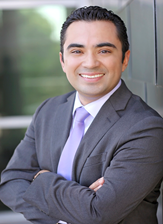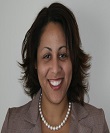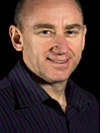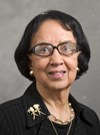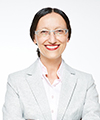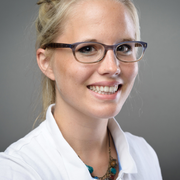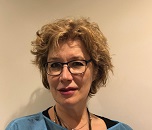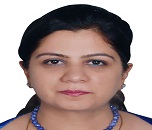Theme: Modern Dentistry with Gentle Care
Dental Marketing 2019
After the success of Dental Marketing 2017 in Las Vegas, Dental Marketing 2018 in Boston, we are inviting participants across the globe to attend 37th International Conference on Dentistry & Dental Marketing (Dental Marketing 2019) during September 25-26, 2019 in Toronto, Canada. The main theme of the conference is ‘Modern Dentistry with Gentle Care’ The relative novel nature of the conference and its relevance to the current dental market makes this summit an event to look forward for all the individuals of the Dental Community
Dental Marketing 2019 will look to improve and build on the steeping stones of its predecessor and create a platform for discussion on dental practice management and marketing besides conventional dentistry
The nature of the conference is crucial to its purpose as dentists who attend the conference can not only contribute and share their research but also learn about how marketing influences their practices and implement and modernize
The conference will be held in Toronto, Canada during September 25-26, 2019 at Park Inn by Radisson Toronto Airport
Dental Marketing is the integration of marketing strategies in the field of dentistry to help Dental Professionals harness the full potential of their practice. It involves the use of tools and techniques of marketing to achieve a certain degree of publicity and broaden the reach of the practice and the practitioner. The conference is a rare opportunity for all individuals of the dental community to upgrade their know-how of the latest marketing strategies.
Details of Dental Marketing 2019
|
Conference Name |
Place |
Dates |
|
Dental Marketing 2019 |
Toronto, Canada |
September 25-26, 2019 |
Dentistry & Dental Marketing has been designed with a twofold objective in mind. The main theme of the conference is "Modern Dentistry with Gentle Care” which covers a wide range of critically important sessions.
The event aims at bringing a wide range of dental professionals ranging from mainstream Prosthodontics & Orthodontics to relatively offbeat Micro dentistry, Holistic Dentistry etc. and also lays a special emphasis at educating and informing dental practitioners with the latest knowledge of marketing strategies that can be applied to counter the undervaluation dental practices face.
To add to its promise, the venue of the event has been selected after much research to assure that the event is being held in one of the hotspots for the concerned field, therefore attendance is expected to be astounding, both in quality and quantity. The variety of prospective audience includes: figures of academic excellence, interested industrialists, Students, exhibitors and eminent faces from the world of marketing thus enabling the sponsors a unique chance to choose from a pool of outstanding scopes for expansion of their business, new project undertaking and recruitment. All these factors combined and several more make Dental Marketing-2019 a “must attend” dental conference.
A Unique Opportunity for Advertisers and Sponsors at this International event.
For sponsorship opportunities: https://dentalmarketing.conferenceseries.com/sponsors.php
Toronto, Canada
Welcome to Toronto, the most multicultural diverse city on the planet: over 140 languages are spoken. It's estimated that over half of Toronto's residents were born outside Canada, and despite its complex makeup, Torontonians generally get along. When the weather is fine, Toronto is a blast: a vibrant, big-time city abuzz with activity. Some of the world's finest restaurants are found here, alongside happening bars and clubs and eclectic festivals.
Put simply: Toronto is fun. With top-notch restaurants and theatre, museums and art galleries, there is plenty to see and do. The downtown skyscrapers mark Canada’s financial hub, but after hours, business folk swap suits for shorts and head outside in summer; in winter, they pull on parkas and ice skates.
North America’s fourth-largest city, Toronto buzzes with 200,000 students and a population representing 200 nations. As well as ethnic restaurants, the food scene features some of Canada’s best chefs, all following the “fresh and local” mantra. Getting around is easy on the efficient transport system; Niagara Falls are two hours away.
Niagara Falls are just two hours away
Toronto’s variety is surprising. The 1,815-ft CN Tower provides astonishing views over Lake Ontario. Below, Toronto’s cultural scene hums, with theatre, ballet and lives music nightly in dozens of pubs. Classy museums include the Art Gallery of Ontario, the Royal Ontario Museum and the quirky Bata Museum, all about shoes. Have fun in the Distillery District; buy funky fashion along Queen Street West; munch your way around Kensington Market and St Lawrence Market.
Ambulance: emergency 911; non-emergency 416 392 2000
Police: emergency 911; non-emergency 416 808 2222
Conferenceseries LLC Ltd is elated to bring Dental Marketing-2019, an event that promises to establish ground breaking benchmarks in the field of dentistry. Dentistry & Dental Marketing 2019 is a unique event designed to bring about a revolution in the field of dentistry. The conference will deal with the challenges faced by Dental professionals in the course of their practices and seek to improve conditions related to dentist-patient interaction.
We cordially invite all concerned people from USA, UK, Jordan, UAE, Turkey, Spain, Saudi Arabia, Egypt, Netherlands, Germany, France, Italy, Brazil, Dubai, Israel, India, China, Japan to come join us at our event and make it successful by your participation. A brief summary of the exciting topics covered in this conference is given below.
The essence of public health dentistry lies in the fact that the area focuses on a community or population as a whole and not individual patients. Public health dentists work towards betterment of overall oral and dental health of their communities. They educate patients to adapt to practices that might help improve their general dental health in the long run. Public health dentistry also concentrates on patient education, increased awareness of government programs and efforts towards community dental health and wellness.
Oral health improvement.
Dental public health intelligence.
Academic dental public health
Oral health surveillance.
2. Oral and Maxillofacial Radiology
One of the nine dental specialties recognized by the ADA, RCDC & RACD, Oral and Maxillofacial Radiology is primarily concerned with the performance and interpretation of diagnostic imaging of the mouth, jaws and adjacent structures. OMFR often called DMFR spans a broad area covering techniques like Cone beam CT, multislice CT, MRI, PET etc.
Conebeam CT
Multislice CT
MRI
3. Oral and Maxillofacial Pathology
This dental specialtity focuses on any and every disease around the “Oral Cavity” ie mouth , “Maxillofacial” ie Jaws and all related structure like salivary glands, facial muscles, Temporomandibular Joints, facial muscles & the perioral skin. Oral & Maxillofacial Pathology covers a vast range of pathological disorders ranging from congenital ones like Malocculsion, Eagle Syndrome to acquired ones like Gingivitis, Herpes Simplex & Oral Candidiasis. Some areas of Oral & Maxillofacial pathology even extend to the treatment of complex conditions Sjoren syndrome, Oral Cancer.
Malocculsion
Gingivitis & Periodontitis
Neoplastic & Idiopathic disorders
Angiodema
4. Oral and Maxillofacial Surgery
Oral & Maxillofacial surgeons deal in surgically treating a range of diseases, injuries & defects in the head, neck, face, Jaws and tissues surrounding these structures. The area consists of widely used procedures like cosmetic surgery of the head and the neck , dentoalveolar surgery to relatively new ones like applications of lasers.
Cosmetic Surgery of the head and neck.
Orthognatic Surgery
Insertion of Osso-integrated dental implants
Laser applied OMS
Formerly known as Pedodentistry , pediatric dentistry involves providing special dental care for children through adolescence. Pediatric dentists educate and provide the necessary dental care to children and advice regarding the child’s wellbeing to the parents.
Preventive home care programs
Need for early detection
Diet counseling
6. Endodontics
Endodontics is the dental specialty that is concerned with the overall health of the dental pulp and the tissues surrounding the teeth. The ADA defines Endodontics as the “study and practice encompass the basic and clinical sciences including biology of the normal pulp, the etiology, diagnosis, prevention and treatment of diseases and injuries of the pulp and associated periradicular conditions.” The evolution of Endodontics in the last decade has significantly contributed to the recent increase in the quality of dental treatment.
Root canal
Regenerative endodontics
Endodontic therapy
7. Orthodontics
Derived from the greek words ‘Orthos” meaning straight and “odont” meaning tooth, Orthodontics is a recognized dental specialty that primarily aims to help patients obtain optimal occlusion. The area of orthodontic treatment includes correcting crooked or misaligned teeth to provide the patients aesthetically pleasing smiles. The procedures generally use the help of metal wires inserted into orthodontic brackets and functional appliances often used to correct jaw growth.
Braces, Retainers & other orthodontic devices
Functional appliances in Orthodontics
8. Periodontics
Periodontics is the specialty branch of dentistry that studies the structures supporting the teeth Periodontum that includes the gingiva, alveolar bone, cementum and the periodontal ligament. Periodontists treat diseases that affect the above structures through a wide variety of procedures including surgery and use of implants. This specialty of dentistry also covers the placement and maintenance of dental implants.
Peri-Implantitis.
Chronic Periodontitis
Scaling & Root planning
Often called “Dental Prosthetics” or “Prosthetic Dentistry” this specialty of dentistry is associated with dental prosthesis. According to the definition of the American Dental Association Prosthodontics may be defined as the “" dental specialty pertaining to the diagnosis, treatment planning, rehabilitation and maintenance of the oral function, comfort, appearance and health of patients with clinical conditions associated with missing or deficient teeth and/or oral and maxillofacial tissues using biocompatible substitutes."
Oral & Maxillofacial Prosthodontics
Conditions- Bruxism, Occlusal Trauma, Edentulism, etc.
Treatment modalities-Dentures, Inlays & Overlays, Veneers and more.
Digital dentistry might be characterized in an expansive extension as any dental innovation or gadget that consolidates advanced or PC controlled parts as opposed to that of mechanical or electrical alone. This wide definition can extend from the most regularly considered regions of advanced dentistry — CAD/CAM (PC helped outline/PC supported assembling) — to those that may not be perceived, for example, PC controlled conveyance of nitrous oxide. Digital Dentistry includes work in a variety of areas including; CAD/CAM and intraoral imaging — both laboratory- and clinician-controlled; Caries diagnosis; Computer-aided implant dentistry — including design and fabrication of surgical guides; Digital radiography — intraoral and extraoral, including cone beam computed tomography (CBCT); Electric and surgical/implant hand pieces; Lasers; Occlusion and TMJ analysis and diagnosis; Photography — extraoral and intraoral; Practice and patient record management — including digital patient education and Shade matching.
CAD/CAM and intraoral imaging
Computer-aided implant dentistry
Digital radiography
Photography — extraoral and intraoral
Sedation dentistry utilizes medication to help patients relax during dental procedures. It's sometimes referred to as "sleep dentistry,” Patients are usually awake with the exception of those who are under general anesthesia. The degree of sedation applied varies significantly from case to case ranging from minimal sedation where patients are awake but relaxed to general anesthesia where patients are completely unconscious. This procedure is ideal for patients with real fear or anxiety that prevents them from adapting the required dental procedure.
Types of sedation used in dentistry.
Pros & Cons of sedation in dentistry.
Precautions to be practiced during using sedatives before a procedure
12. Green Dentistry
Green dentistry is a vast topic that touches on everything from patient care to dental processes. Green dentistry means re-thinking dental processes and procedures, office administration and marketing, and office design and construction, using the tenets of green dentistry as a guide. The Eco-Dentistry Association defines green dentistry as practice that: Reduces waste and pollution; Saves energy, water and money; Incorporates high-tech innovations; Is wellness based.
Elements of Green Dentistry
Eco-Dentistry
13. OSAS
Obtrusive Sleep Apnea Syndrome is a sleeping disorder marked by repetitive episodes of cessation of breathing, 10 seconds or longer, during sleep. During this time, the individual’s oxygen level drops, resulting in hypoxemia and sleep disruption. SAS was clinically recognized more than 30 years ago, but the health implications of this syndrome were barely known outside of the medical field. However, as more cases were uncovered, attention turned to the impact of SAS on the general health of individuals, such as the increased risk of cardiovascular disease, along with its oral implications such as periodontitis.
Marketing of Dental Sleep Medicine
Lifestyle modifications to remedy OSAS
Search engine marketing (SEM) is a form of Internet marketing that involves the promotion of websites by increasing their visibility in search engine results pages (SERPs) primarily through paid advertising. Search engine optimization (SEO) is the process of affecting the visibility of a website or a web page in a web search engine's unpaid results—often referred to as "natural", "organic", or "earned" results. In general, the earlier (or higher ranked on the search results page), and more frequently a site appears in the search results list, the more visitors it will receive from the search engine's users, and these visitors can be converted into customers. SEO may target different kinds of search, including image search, local search, video search, academic search, news search and industry-specific vertical search engines.
Why being on the first page matters!
Traffic is proportional to revenue.
Organic traffic vs paid traffic
How to optimize your practice website.
15. Dental Practice Management
Managing a dental practice takes a lot of finesse and planning. The success of a dental practice vastly depends on how capable the practice manager is. From staff management to patient management a wide variety of critically important tasks need to be executed with extreme care and skill. This session will unfold a few critical principles and laydown a handful of essential ground rules that dental practice managers and owners should look to abide by.
Identifying patients
Pricing- The key to patient intake and retention
Staffing- The backbone of every practice.
16. Oral and Maxillofacial Pathology
Oral and maxillofacial pathology (also termed oral pathology, stomatognathic disease, dental disease, or mouth disease) refers to the diseases of the mouth ("oral cavity" or "stoma"), jaws ("maxillae" or "gnath") and related structures such as salivary glands, temporomandibular joints, facial muscles and perioral skin (the skin around the mouth). The mouth is an important organ with many different functions. It is also prone to a variety of medical and dental disorders. The specialty oral and maxillofacial pathology is concerned with diagnosis and study of the causes and effects of diseases affecting the oral and maxillofacial region. It is sometimes considered to be a specialty of dentistry and pathology. Sometimes the term head and neck pathology is used instead, but this might imply that the pathologist deals with otorhinolaryngologic disorders (i.e. ear, nose and throat) in addition to maxillofacial disorders. In this role there is some overlap between the expertise of head and neck pathologists and that of endocrine pathologists.
17. Dentistry
Dentistry is a branch of medicine that consists of the study, diagnosis, prevention, and treatment of diseases, disorders, and conditions of the oral cavity, commonly in the dentition but also the oral mucosa, and of adjacent and related structures and tissues, particularly in the maxillofacial (jaw and facial) area. Although primarily associated with teeth among the general public, the field of dentistry or dental medicine is not limited to teeth but includes other aspects of the craniofacial complex including the temporomandibular and other supporting structures. Dentistry is often also understood to subsume the now largely defunct medical specialty of stomatology (the study of the mouth and its disorders and diseases) for which reason the two terms are used interchangeably in certain regions.
18. Dental Marketing
Marketing is key to the success of any business and dental practices are no exception. For a dental practice to grow, a single dentist should be seeing 24-50 new patients per month. And in order to attract new dental patients, a practice must offer a competitive product at competitive pricing, along with convenient quality services – all backed by a solid dental marketing plan.
19. Oral and Maxillofacial surgery
Oral and Maxillofacial surgery (OMS or OMFS) specializes in treating many diseases, injuries and defects in the head, neck, face, jaws and the hard and soft tissues of the oral (mouth) and maxillofacial (jaws and face) region. It is an internationally recognized surgical specialty. In countries such as the UK, Australia and most of Europe, it is recognized as both a specialty of medicine and dentistry, and a dual degree in medicine and dentistry is compulsory. In other countries including the United States, India, Canada, Brazil, New Zealand, and Sweden, it is a recognized specialty of dentistry.
20. Dental Stem Cell
Dental pulp is the soft live tissue inside a tooth. Dental pulp contains stem cells, known as Dental Pulp Stem Cells. The finest Dental Pulp Stem Cells are found in a baby teeth or milk teeth. The stem cells from the milk teeth are 'mesenchymal' type of cells i.e. cells that have the ability to generate a wide variety of cell types like chondrocytes, osteoblasts and adipocytes. Chondrocytes are cells that have the ability to generate cartilage, which can play an important role in the treatment of arthritis and joint injuries. Osteoblasts are cells that have the ability to generate bones. Adipocytes are cells that have the ability to compose adipose tissue, specialized in storing energy as fat. In essence, dental stem cells can generate solid structures of the body such as bone, new dental tissue, cartilage and muscle. New research suggests the potential (currently under experimental research) to regenerate nerves. This is being studied further for use in dentistry and medicine.
21. The Future of Dentistry: Benefits of 3D Dentistry and CBCT Machines
One of the most important and exciting developments in dental diagnostic technology in the past decade has been the advent of 3D dental imaging. However, most people likely aren’t even aware of what 3D dental technology is- that’s how new it is! How is works?
A Dental Market trend is a perceived tendency of financial markets to move in a particular direction over time. These trends are classified as secular for long time frames, primary for medium time frames, and secondary for short time frames. Traders attempt to identify market trends using technical analysis, a framework which characterizes market trends as predictable price tendencies within the market when price reaches support and resistance levels, varying over time. A trend can only be determined in hindsight, since at any time prices in the future are not known.
23. Dental Marketing Strategies
Dental Marketing strategy is a long-term, forward-looking approach to planning with the fundamental goal achieving a sustainable competitive advantage. Strategic planning involves an analysis of the company's strategic initial situation prior to the formulation, evaluation and selection of market-oriented competitive position that contributes to the company's goals and marketing objectives. Strategic Dental marketing, as a distinct field of study emerged in the 1970s, and built on strategic management that preceded it. Dental Marketing strategy highlights the role of marketing as a link between the organization and its Patients.
24. Oral Cancer
Oral cancer, also known as mouth cancer, is a type of head and neck cancer and is any cancerous tissue growth located in the oral cavity. It may arise as a primary lesion originating in any of the tissues in the mouth, by metastasis from a distant site of origin, or by extension from a neighboring anatomic structure, such as the nasal cavity. Alternatively, the oral cancers may originate in any of the tissues of the mouth, and may be of varied histologic types: teratoma, adenocarcinoma derived from a major or minor salivary gland, lymphoma from tonsillar or other lymphoid tissue, or melanoma from the pigment-producing cells of the oral mucosa. There are several types of oral cancers, but around 90% are squamous cell carcinomas, originating in the tissues that line the mouth and lips. Oral or mouth cancer most commonly involves the tongue. It may also occur on the floor of the mouth, cheek lining, gingiva (gums), lips, or palate (roof of the mouth). Most oral cancers look very similar under the microscope and are called squamous cell carcinoma, but less commonly other types of oral cancer occur, such as Kaposi's sarcoma.
Dental trauma refers to trauma (injury) to the teeth and/or periodontium (gums, periodontal ligament, alveolar bone), and nearby soft tissues such as the lips, tongue, etc. The study of dental trauma is called dental traumatology.
26. How to Create an Awesome Dental Marketing Plan
Every small business owner tends to struggle with creating their first marketing plan. I think the main reason for this is that most business owners tend to focus on the outcome and end campaigns, while often overlooking the strategy, planning and execution phases. Unless you've gone to school for marketing or business, you probably haven't been trained to create a strong marketing plan. Doctor's that we work with here at Elevate DDS have many years of school under their belts, but not many of them studied any sort of marketing during their time in college. This is why we thought it would be a good idea to outline what a dental marketing plan should look like, from inception to campaign completion.
27. Nanotechnology Inspires Next-generation Dental Materials
Have a cavity? Ask your dentist about filling it with a mixture of nanoparticles including silica and zirconia. These white fillings resemble teeth better than their metal alternatives and are less likely to come loose or fracture teeth. This is just the beginning argue scientists in a review of 'Nano dentistry.' Next-generation dental materials incorporating nanotechnology aim to help teeth self-heal, rebuild enamel, and protect against bacterial infections.
28 Dentistry – New Technologies
There are four major disciplines within dental technology. These are fixed prosthesis including crowns, bridges and implants; removable prosthesis, including dentures and removable partial dentures; maxillofacial prosthesis, including ocular prosthesis and craniofacial prosthesis; and orthodontics and auxiliaries, including orthodontic appliances and mouth guards. The dentist communicates with the dental technologist with prescriptions, drawings and measurements taken from the patient. The most important aspect of this is a dental impression into which the technologist flows a gypsum dental stone to create a replica of the patient’s anatomy known as a dental cast. A technologist can then use this cast for the construction of custom appliances.
Tooth abnormalities may be categorized according to whether they have environmental or developmental causes.While environmental abnormalities may appear to have an obvious cause, there may not appear to be any known cause for some developmental abnormalities. Environmental forces may affect teeth during development, destroy tooth structure after development, discolor teeth at any stage of development, or alter the course of tooth eruption. Developmental abnormalities most commonly affect the number, size, shape, and structure of teeth.
30. Cosmetic Dentistry:
Cosmetic dentistry is generally used to refer to any dental work that improves the appearance (though not necessarily the functionality) of teeth, gums and/or bite. It primarily focuses on improvement dental aesthetics in color, position, shape, size, alignment and overall smile appearance. Many dentists refer to themselves as "cosmetic dentists" regardless of their specific education, specialty, training, and experience in this field. This has been considered unethical with a predominant objective of marketing to patients.
31. Forensic Dentistry:
Forensic dentistry or forensic odontology is the application of dental knowledge to those criminal and civil laws that are enforced by police agencies in a criminal justice system. Forensic dentists are involved in assisting investigative agencies to identify recovered human remains in addition to the identification of whole or fragmented bodies; forensic dentists may also be asked to assist in determining age, race, occupation, previous dental history and socioeconomic status of unidentified human beings. Forensic dentistry is the proper handling, examination and evaluation of dental evidence, which will be then presented in the interest of justice. The evidence that may be derived from teeth is the age (in children) and identification of the person to whom the teeth belong. This is done using dental records including radiographs, ante-mortem (prior to death) and post-mortem (after death) photographs and DNA. "Forensic odontology" is derived from Latin, meaning a forum or where legal matters are discussed.
32. Prosthodontics
Prosthodontics, also known as dental prosthetics or prosthetic dentistry, is the area of dentistry that focuses on dental prostheses. It is one of nine dental specialties recognized by the American Dental Association (ADA), Royal College of Surgeons of England, Royal College of Surgeons of Edinburgh, Royal College of Surgeons of Ireland, Royal College of Surgeons of Glasgow, Royal College of Dentists of Canada, and Royal Australasian College of Dental Surgeons. The ADA defines it as "the dental specialty pertaining to the diagnosis, treatment planning, rehabilitation and maintenance of the oral function, comfort, appearance and health of patients with clinical conditions associated with missing or deficient teeth or oral and maxillofacial tissues using biocompatible substitutes.
Restorative dentistry is the study, diagnosis and integrated management of diseases of the teeth and their supporting structures and the rehabilitation of the dentition to functional and aesthetic requirements of the individual. Restorative dentistry encompasses the dental specialties of endodontics, periodontics and prosthodontics and its foundation is based upon how these interact in cases requiring multifaceted care. In the UK restorative dentistry is legally recognized as a specialty under EU directive, with voices from the British Society for Restorative Dentistry and the Association of Consultants & Specialists in Restorative Dentistry.
Past Conference Report – Dental Marketing 2018
Conference Series LLC Ltd organized the 36th International Conference on Dentistry and Dental Marketing" during Oct 24-25th, 2018, Boston Massachusetts, USA was organized with a focus on “Dentistry Meets Marketing”. It was a great success where eminent keynote speakers from various reputed universities and organizations made their resplendent presence and addressed the gathering.
Dental Marketing 2018 Organizing Committee would like to thank the Moderators of the conference, Sonya Dunbar, Mobile Dental Xpress Wellness and Nutrition, USA & Sneha Shah, St Joseph’s Regional Medical Center, USA who contributed enormously for the smooth functioning of this event.
Conference Series LLC Ltd would like to convey a warm gratitude to all the Honorable guests of Dental Marketing 2018
Jona J.Sela, Hebrew University, Israel on the Dias.
Dr. Jan Wade Gilbert, Wian Industries Long Beach, USA
Dental Marketing 2018 witnessed an amalgamation of peerless speakers who enlightened the attendees with their knowledge and confabulated on various new-fangled topics related to the field of Dentistry and Dental Marketing and Oral Care
Dr. Roche Penafuerte Ruiz is the President/CEO of KJR Dental Center Incorporated, Philippines presented a paper on “Dental Marketing: “BMEG approach”; Dr. James L. Ratcliff, Rowpar Pharmaceuticals Inc., USA gave a presentation on “Consumer centric marketing in dentistry”. Dr. Sonya Dunbar, Mobile Dental Xpress Wellness and Nutrition, USA presented on “How dirty teeth and tongues are killing our geriatric population"; Dr. David Gillam, Barts and the London School of Medicine QMUL, UK enlightened the audience with her presentation “Management of post-operative sensitivity following periodontal treatment”; Dr. Ahmed Ali Ghorab, Nahda University, Egypt elucidated on “Dentistry in Egypt and the role of social media and scientific references in learning for Arab dental students”; Dr. Melissa Kelly Senedin, Senedin Clinical, Brazil described about “Transdermal nanostructureds teroids replacement therapy: Novel protocol for TMJ”; Dr. Manuela Bafini Fonseca, UNESP-Sao Paulo State University, Brazil explained about the “Mechanized skinbooster technique with anesthesia without needles”, Dr. Maria Eugenia Bianconsini, Braz Cubas University, Brazil gave the presentation on the “Bianconsini lips filler protocol: Naturality, proportion and lips joviality”; Dr. Manju Natarajan, Merrimack College, USA presented on “Intersection of technology and dentistry: Emerging major breakthroughs”; Dr. Jan Wade Gilbert, Wian Industries Long Beach, USA enlightened the audience with her presentation entitled “We know that the ancient Egyptians used dental implants”; and Dr. Ray Caruso, Lone Peak Dental Group, USA gave a paper presentation on “Big data? Big deal… what do I do with it? ". Dr. Anand Suresh, Penang International Dental College, Malaysia presented a paper on “Update on esthetic dentistry”; Dr. A Nayeemullah Khan, Meenakshi Ammal Central College, India gave a presentation on “A critical appraisal of sfoa as compared to traditional surgical orthodontics - A short term”. Dr. Nourah Abdul Kader, Dr. MGR Medical University, India gave a presentation on “Innovative applications of digital marketing in the dental patient interaction lifecycle”. Dr. Karthik Vinayagamoorthi, Babson College, USA gave a presentation on “Innovative applications of digital marketing in the dental patient interaction lifecycle”. Dr. Aditi Jain, India gave a presentation on “Comparative analysis of canal centering ratio, apical transportation, & remaining dentin thickness between single file system i.e. Oneshape and Waveone rotary by using cone beam computed tomography – An in-vitro study”. Dr .Phillip G Pitts, Tennessee University of Common Sense, USA gave a presentation on “Aerosol ceramic bonded titanium substructures and abutments”. Dr. Ayman Hegab, Al-Azhar University, Egypt gave a presentation on “Mri-based determination of occlusal splint thickness for temporomandibular joint disk derangement: A randomized controlled clinical trial”. Dr. James D Bates, Texas Oral and Maxillofacial Surgery, USA gave a presentation on “Diagnosis, nonsurgical and surgical treatment of obstructive sleep apnea”. Dr. Medhat Ahmed Abdallah AbdelBaki, King Abdulaziz Univeristy, Saudi Arabia gave a presentation on “Clinical evaluation between zirconia crowns and stainless steel crowns in primary molars teeth”. Dr. Ramandeep Kaur Sohi, Sri Sukhmani Dental College and Hospital, India gave a presentation on “A paradigm shifts global trends of oral cancer: A call to action”. Dr. Hassan Hussain Koshak, Riyadh Colleges of Dentistry and Pharmacy, KSA gave a presentation on “Medical considerations relating to the oral health”. Dr. Sneha Shah, St Joseph’s Regional Medical Center, USA gave a presentation on “Betel nut chewing in the Greater New York/New Jersey area: Any consequence?”. Dr. Vibha Singh, King George Medical University, India gave a presentation on “Evaluation of herbal preparation in management of oral submucous fibrosis”. Dr. Maxim Ashortia, Dental and Academic Center, Russia gave a presentation on “WOW effect, client capture using digital technologies”. Dr. Emre Ozel, University of Kocaeli, Turkey gave a presentation on “Effects of different teas on surface roughness of resin composites”. Dr. Kanwaldeep Singh Soodan, Maharishi Markandeshwar University, India gave a presentation on “Study of effect of polyvinylpyrrolidone-iodine (PVP-I) 2% as an anti-oedematous agent in third molar surgery”. Dr. Abdul Waleed Nejrab, Kabul University of Medical Sciences, Afghanistan gave a presentation on “Dental Marketing and network issues”. Dr. Jona J Sela, Hebrew University, Israel gave a presentation on “Basic aspects of bone reaction to implants”. Dr. Naiya Hitesh Shah, AMC Dental College and Hospital, India gave a presentation on “Oral submucous fibrosis-A dreadful malady for the ages”.
Video presentation
Dr. Eduard Babulak, National Science Foundation, USA gave a Video presentation on “Future smart dental practice for the third millennium” on Oct 24th, 2018, in connection with this conference as a curtain raiser to this topic. Dr. Ahmed Ibrahim Atalla, Cairo University, Egypt gave a Video presentation on “The efficiency of orthodontic mini-screw implants during incisors intrusion: Asystematic review and meta-analysis” on Oct 24th, 2018, in connection with this conference as a curtain raiser to this topic. Dr. Ghaidaa Ureiga, Ministry of Health, Saudi Arabia gave a Video presentation on “Caries risk factors for children seen in Ieddah speciality dental center, Jeddah, Saudi Arabia” on Oct 25th, 2018, in connection with this conference as a curtain raiser to this topic. Dr. Greta Kersyte, Lithuanian University of Health Sciences, Lithuania gave a Video presentation on “Human dentin as an autologous bone grafting material”.
Poster Presentation:
Dr. Manju Natarajan, Merrimack College, USA gave a poster presentation on “Intersection of technology and dentistry: Emerging major breakthroughs”. Dr. Medhat Ahmed Abdallah AbdelBaki, King Abdulaziz Univeristy, Saudi Arabia gave a poster presentation on “Clinical evaluation between zirconia crowns and stainless steel crowns in primary molars teeth”. Dr. Reem Sami Alwakeel, Kind Saud bin Abdulaziz for health science, Saudi Arabia gave a poster presentation on “Measurement accuracy of space analysis by smart phone applications for orthodontic purposes: a comparison study with conventional plaster dental models”. Dr. Deena Mahmoud Barakah, King Saud Medical city, Saudi Arabia gave a poster presentation on “Measurement accuracy of space analysis by smart phone applications for orthodontic purposes: a comparison study with conventional plaster dental models”.
E- Poster Presentation:
Dr. T. Sai Prabhath, Panineeya Institute of Dental Sciences and Research Centre, N.T.R University gave a poster presentation on “Increasing the Reach by Educating Patients”.
Dr. Nandha Krishna Nambi, Meenakshi Ammal Central College, India gave a poster presentation on “The Unusual Destination”.
This conference was a path-breaking opportunity for students too, were given a chance to exhibit their paramount research work through Poster Presentations and discuss the same with the exalted scientists.
Featured Activities:
Dental Marketing 2018 featured several scientific activities which include: Advanced Specialty Courses, Poster Presentations and Competitions, Student Competition and young researcher session.
All the papers presented at Dental Marketing 2018 have been published in the proceedings of the Dentistry.
With the enormous feedback from the participants and supporters of Dental Marketing 2018, Conference Series LLC Ltd is glad to announce “37th International Conference on Dentistry and Dental Marketing" Sep 23-24th, 2019, Toronto, Canada, USA.
Conference Highlights
- Public Health Dentistry
- Oral and Maxillofacial Radiology
- Pediatric Dentistry
- Endodontics
- Orthodontics
- Periodontics
- Prosthodontics
- Digital Dentistry
- Sedation Dentistry
- Green Dentistry
- OSAS
- SEO & SEO in Dentistry
- Dental Practice Management
- Dentistry
- Dental Marketing
- Dental Stem Cell
- The Future of Dentistry: Benefits of 3D Dentistry and CBCT Machines
- Dental Marketing Trends
- Dental Marketing Strategies
- Oral Cancer
- Dental Traumatology
- How to Create an Awesome Dental Marketing Plan
- Nanotechnology Inspires Next-generation Dental Materials
- Dentistry – New Technologies
- Dental Abnormalities
- Cosmetic Dentistry
- Forensic Dentistry
- Prosthodontics
- Restrorative Dentistry
To share your views and research, please click here to register for the Conference.
To Collaborate Scientific Professionals around the World
| Conference Date | September 25-26, 2019 | ||
| Sponsors & Exhibitors |
|
||
| Speaker Opportunity Closed | |||
| Poster Opportunity Closed | Click Here to View | ||
Useful Links
Special Issues
All accepted abstracts will be published in respective Our International Journals.
Abstracts will be provided with Digital Object Identifier by





